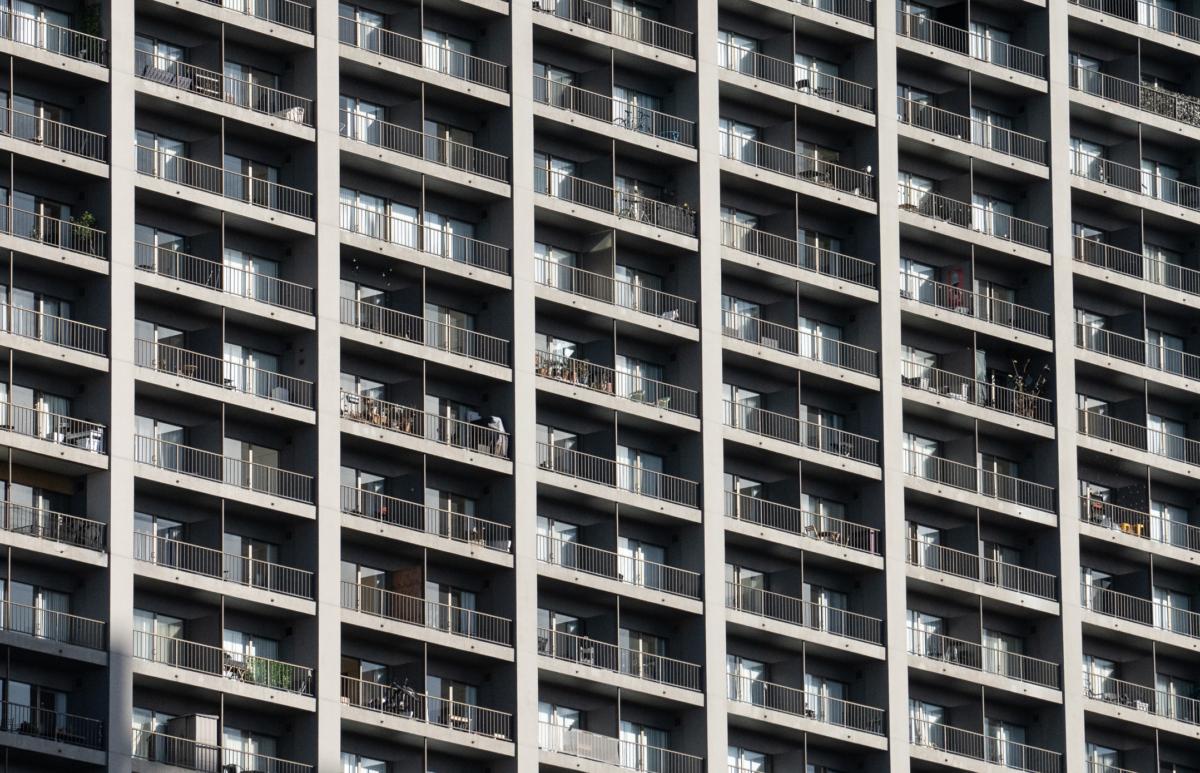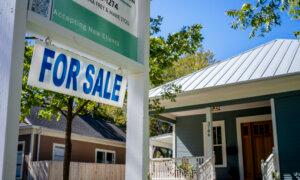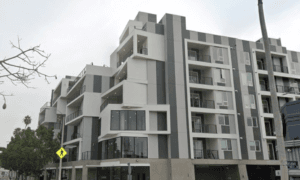Bill states that land use regulation is the responsibility of state and local governments, but now federal support is needed to achieve ’reforms.’
A bill intended to increase federal powers to address the affordable housing crisis could result in tiny homes in backyards nationwide, apartments without parking, houses built in back alleys, and taller buildings throughout local communities.
The United States’ population will increase from 342 million people in 2024, to 383 million people in 2054, a January report from the Congressional Budget Office (CBO) predicted, saying immigration is increasingly driving population growth.
Although studies indicate that the nation has a shortage of anywhere from 2 million to 4 million housing units, Census data shows little evidence of this shortage, according to a study in the journal “Housing Policy Debate,” which says there are enough homes, but they are not affordable, and extremely low-income renters feel the crunch most of all.
“Historically, zoning practices have been used to divide communities and concentrate poverty in under-resourced areas,” a joint statement from Mr. Fetterman and Ms. Blunt Rochester reads. “By transforming our zoning regulations, more people would have access to affordable and diverse types of housing, high-paying jobs, and healthy and safe communities.”
Their bill states that land use regulation is the responsibility of state and local governments, but now federal support is needed to achieve “reforms,” and it says this involvement does not preempt local authority.
If people cannot afford housing in a neighborhood, it is unfair, the bill suggests.
“It is the policy of the United States to provide for fair housing throughout the country, and it is in the regional and national interest to have a supply of housing that is fair, affordable, adequate, and near opportunity,” the bill reads.
It says, any zoning ordinance that restricts housing opportunities based on economic status or income without good reason is “contrary to the regional and national interest.”
Affordable Housing
The Reducing Regulatory Barriers to Housing Act defines affordable housing as a monthly payment of less than 30 percent of a household’s monthly income. By that calculation, for a family earning the U.S. median household income of $77,300 a year, affordable housing would be less than $1,900 a month.
The national median mortgage payment for those applying to buy homes in the United States was $2,256 in April, according to the Mortgage Bankers Association. That is up from $2,201 in March.
The bill would establish new national frameworks and guidance for local zoning and create a grant program for local municipalities to digitize zoning codes, easing future zoning changes.
It calls on the Department of Housing and Urban Development to establish a task force to define national zoning policy. The task force would be made up of developers, academic researchers, and advocates with experience in affordable housing, community development efforts, and fair housing. Community engagement experts, public housing authorities, transit authorities, and members of local zoning, planning, and transportation boards, would also be included.
Within three years, the task force will produce a report defining federal zoning guidelines and best practices. Specifically, the task force should offer recommendations for reducing or eliminating parking minimums. This means an apartment building could be built with few or no parking spots, perhaps in relation to the distance from public transportation.
It also calls for recommendations for increasing the maximum building heights and reducing minimum lot size and setback requirements. This would result in taller buildings, set closer to the road, with more living units.
The bill also seeks to eliminate restrictions against accessory dwelling units, such as tiny homes in backyards, an apartment over a garage, or another level added to an existing home.
California’s state zoning laws already require local governments to have ordinances for accessory dwelling units. The law was designed to increase the supply of affordable housing in areas with mostly single-family homes.

Backyard Neighbors
In Bethlehem, Pennsylvania, officials are trying to encourage more affordable housing by changing zoning laws to allow new housing in alleys behind existing homes. By permitting accessory dwelling units in well-established neighborhoods, property owners can build additional housing in alleys and rent it out.
The city already has older alley homes, but zoning regulations were changed years ago to prevent the construction of more such units. Now the city wants to revert back.
The experimental alley house program received an $850,000 federal grant to build the first four homes, due to the advocacy of U.S. Rep. Susan Wild (D-Pa.).
Ms. Wild, who is running for reelection in the seventh congressional district covering the Lehigh Valley, did not respond to a request for comment for this story.
Her opponent, Ryan Mackenzie, a Republican currently serving as a Pennsylvania state Representative, says inflation and unrestricted immigration are at the root of the housing issues.
“Unchecked inflation, combined with a wide-open border, is putting an enormous strain on the supply of affordable housing and the ability of working families to pay for rent or a mortgage,” Mr. Mackenzie told The Epoch Times. “If we want to get serious about the housing shortage, we can start by doing something about the millions of illegal immigrants who are crossing the border every year.”

Living Closer Together
To curb urban sprawl and save open spaces, some states have implemented “urban growth boundaries” restricting construction outside of metropolitan borders. Oregon, Washington, and Tennessee have different types of such boundaries.
The urban growth boundary in Portland, Oregon, has been in place since 1980. As cities continue to grow, the effect of the boundaries is taller buildings, more apartments, duplexes, and row homes in increasingly densely populated areas to squeeze people in.
The City of Portland lets homeowners host one occupied recreational vehicle or camper on their property. Tiny homes and detached sleeping rooms are also allowed.
“Supporting legislation that empowers state and local governments with the resources, data, and innovative models they need to reform regulatory barriers is essential to solving the housing crisis,” Mike Kingsella, CEO of Up for Growth Action said in a statement about the new federal bill.
“These proactive measures will tip the scales in hundreds of communities who are eager to create more housing but need help getting started.”
Critics such as Tom DeWeese, a grassroots field coordinator at the Committee For A Constructive Tomorrow, say the federal government is attempting to bring public housing into single-family home neighborhoods.
The new legislation is backed by a long list of nonprofits and housing advocacy groups, including California YIMBY, CASA of Oregon, Housing Assistance Council, Congress for the New Urbanism, Council of Large Public Housing Authorities, National Apartment Association, National Association of Affordable Housing Lenders, National Multifamily Housing Council, Pro-Housing Pittsburgh, Spokane Housing for All and Abundant Housing Atlanta.
Original News Source Link – Epoch Times
Running For Office? Conservative Campaign Consulting – Election Day Strategies!


